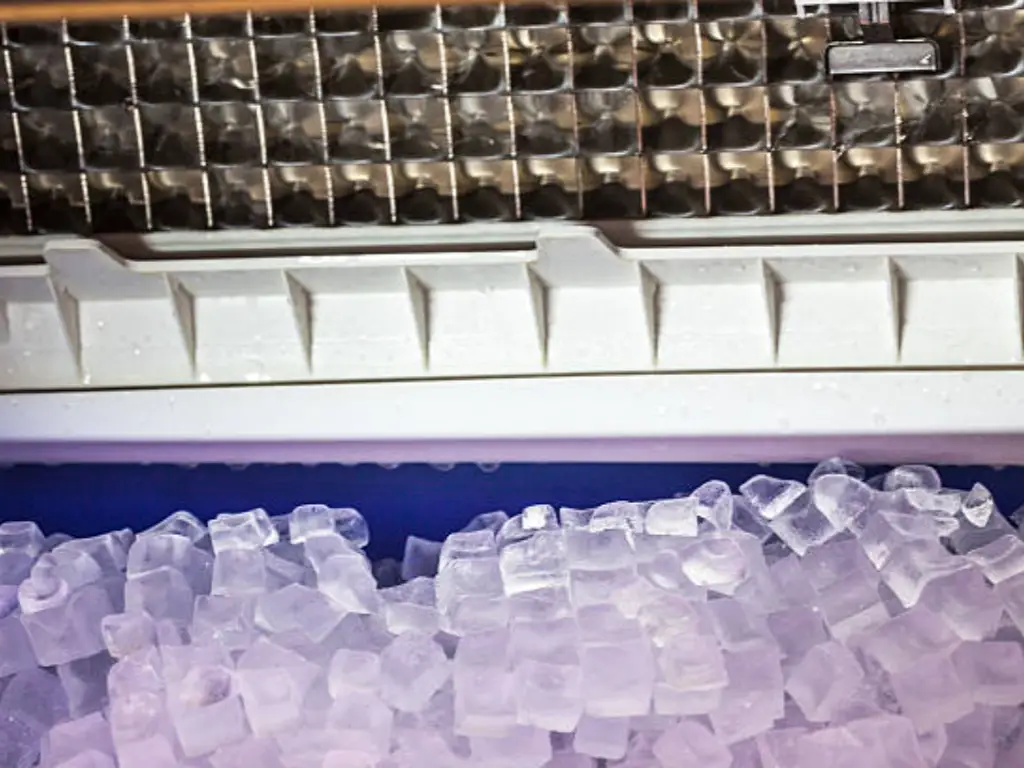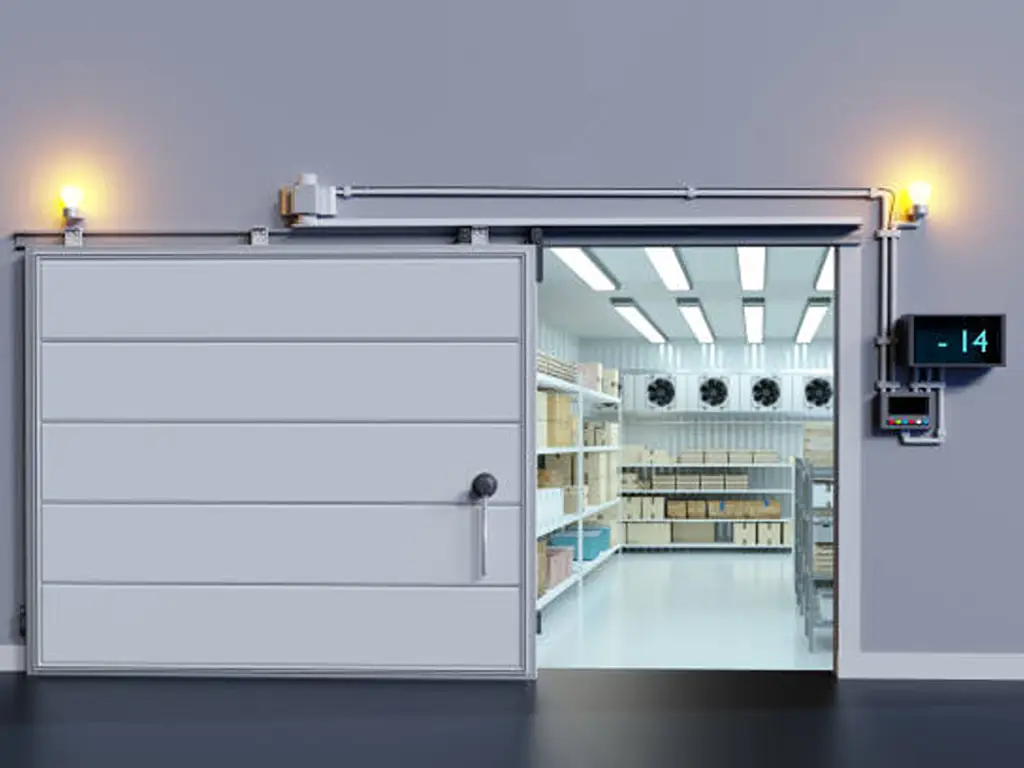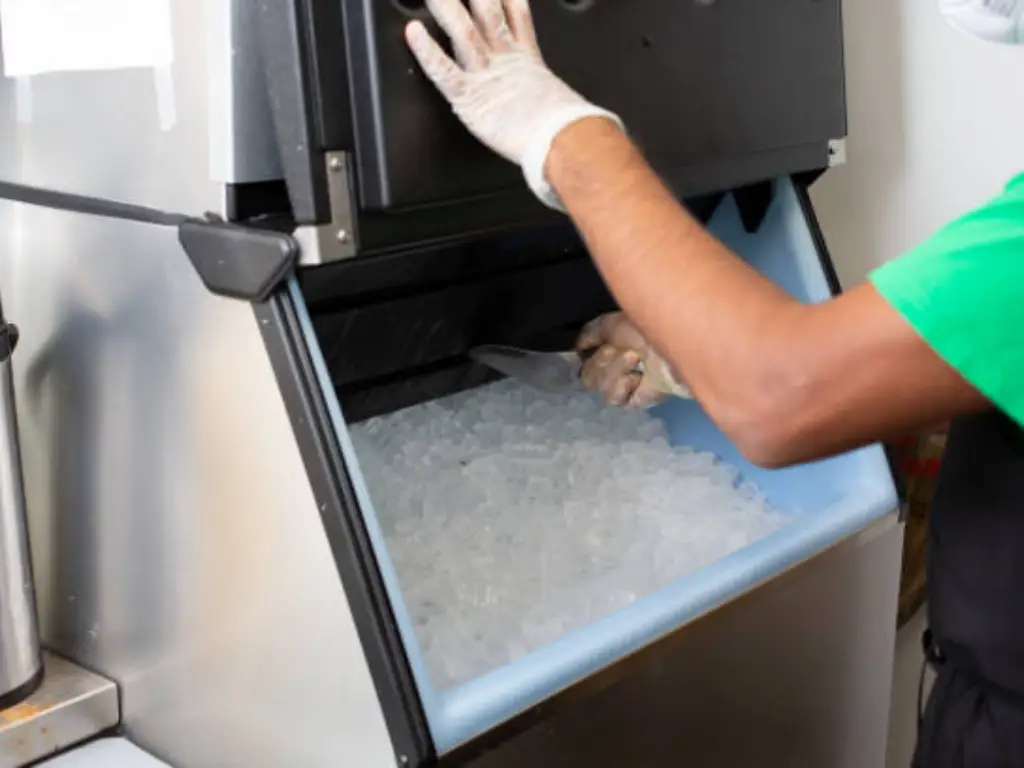| Características | Cubos de gelo | Blocos de gelo |
| Tamanho | Pequeno | Grande |
| Forma | Normalmente quadrado | Retangular ou cilíndrico |
| Usar | Bebidas individuais | Resfriamento em larga escala, escultura |
| Taxa de fusão | Relativamente rápido | Mais devagar |
| Capacidade de resfriamento | Limitado | Mais alto |
| Disponibilidade | Amplamente disponível | Fontes especializadas ou comerciais |
| Conveniência | Fácil de manusear | Requer equipamentos especializados |
Block Ice vs Cube Ice Comparish Table
O gelo é um elemento crucial em uma ampla gama de aplicações, De bebidas de resfriamento à preservação de bens perecíveis. Quando se trata de gelo, Existem dois tipos principais que dominam o mercado Bloquear o gelo e o cubo de gelo. Neste artigo, Vamos nos aprofundar nos detalhes dessas duas formas de gelo, examinando suas características, usos, e vantagens. Até o final, Você terá um entendimento completo das principais distinções entre o gelo em bloco e o gelo do cubo, permitindo que você tome uma decisão informada com base em suas necessidades e preferências específicas.
Comparação entre gelo em bloco e gelo de cubo
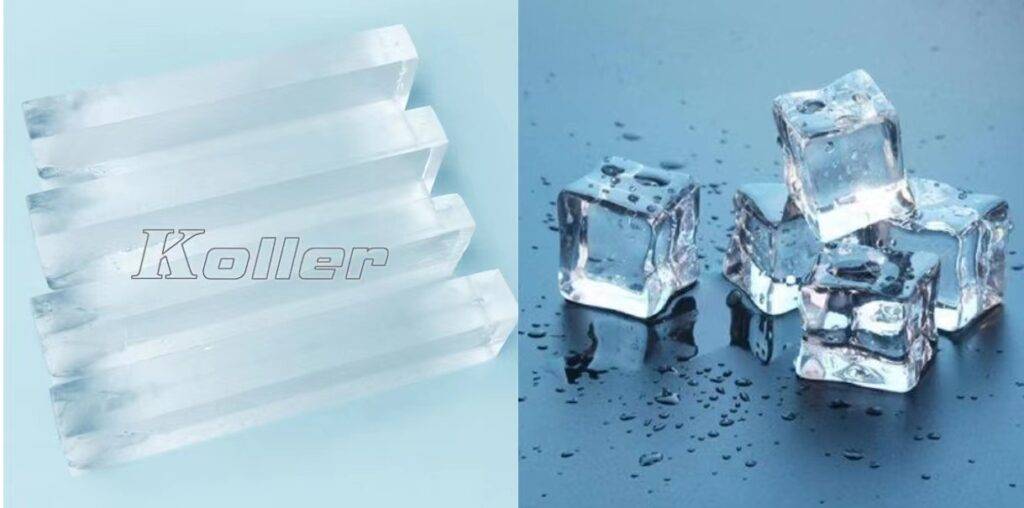
Aparência visual
A primeira diferença notável entre o gelo de bloco e o gelo do cubo está em sua aparência visual. Bloqueie o gelo, Como o nome sugere, é uma massa sólida de gelo que é tipicamente retangular ou quadrada em forma. Emana uma aura de força e durabilidade, tornando -o visualmente atraente para determinadas aplicações.
Em contraste, cubo de gelo é formado em uniforme, cubos de tamanho pequeno que se encaixam facilmente em copos de bebida. O Cube Ice exala uma sensação de elegância e sofisticação, Melhorando a apresentação geral de coquetéis e bebidas.
Taxa de fusão e eficiência de resfriamento
Quando se trata da taxa de fusão e eficiência de resfriamento, Block Ice supera o gelo do cubo. Devido ao seu tamanho maior, Block Ice leva mais tempo para derreter, garantir um efeito de resfriamento sustentado e reduzir a necessidade de substituições de gelo frequentes. Além disso, O gelo em bloco tem uma capacidade de resfriamento mais alta e pode manter temperaturas mais baixas por um longo período de tempo.
Por outro lado, O gelo cubo tende a derreter faester e tem capacidade de resfriamento limitada, o que pode resultar em diluição de bebidas ao longo do tempo.
Aplicações e adequação
Block Ice e Cube Ice encontram suas aplicações em várias configurações, embora com diferentes níveis de adequação. Bloqueie o gelo é particularmente adequado para Eventos em larga escala e aplicações industriais como processamento de alimentos, preservando bens perecíveis, e criando esculturas de gelo. Sua taxa de fusão lenta e capacidade de resfriamento prolongada tornam uma escolha confiável para esses fins.
Cubo de gelo, por outro lado, é mais comumente usado em bebidas individuais, Configurações domésticas, e eventos em pequena escala. Seu tamanho conveniente e propriedades rápidas de arrepio o tornam ideal para uso pessoal e reuniões íntimas.
Fatores de disponibilidade e conveniência
Uma das considerações significativas ao escolher entre gelo e gelo do cubo é a disponibilidade e a conveniência. Cubo de gelo está amplamente disponível e pode ser facilmente obtido em lojas de conveniência, supermercados, e Máquinas de fabricação de cubos de gelo. É um grampo na maioria das famílias, garantindo acesso imediato a cubos de gelo sempre que necessário.
Por outro lado, bloquear gelo pode não ser tão facilmente acessível e pode exigir acordos especiais para compra ou preparação. O tamanho maior e a natureza especializada do gelo em bloco contribuem para sua escassez relativa e disponibilidade limitada.
O que é um cubo de gelo?

Um cubo de gelo é um pequeno, Normalmente pedaço de gelo em forma de quadrado, comumente usada para bebidas de resfriamento ou em várias outras aplicações. É criado por congelamento de água em um recipiente com dimensões específicas, resultando em um sólido, forma uniforme.
Aplicação de cubos de gelo

Os cubos de gelo têm uma ampla gama de usos, incluindo bebidas de resfriamento, preservando itens alimentares perecíveis, proporcionando alívio para ferimentos leves, e mesmo como base para criar bebidas e coquetéis congelados. Eles também são frequentemente usados na indústria de serviços de alimentos para fins de exibição e no campo médico para fins terapêuticos e de recuperação.
Prós e contras de cubos de gelo
- Conveniência e fácil disponibilidade: Uma das principais vantagens dos cubos de gelo é a conveniência deles. Eles podem ser prontamente comprados ou feitos em casa com o mínimo de esforço.
- Adequado para bebidas individuais e uso doméstico: Cubos de gelo são ideais para bebidas individuais, como eles podem caber facilmente em um copo ou copo. Eles também são comumente usados em geladeiras e fabricantes de gelo em casa.
- Taxa de fusão mais rápida e capacidade de resfriamento limitada: Uma desvantagem dos cubos de gelo é sua taxa de fusão relativamente rápida em comparação com blocos de gelo maiores. Eles também têm capacidade de resfriamento limitada, tornando -os menos adequados para manter grandes quantidades de itens frias por um período prolongado.
Como deixar claros cubos de gelo?
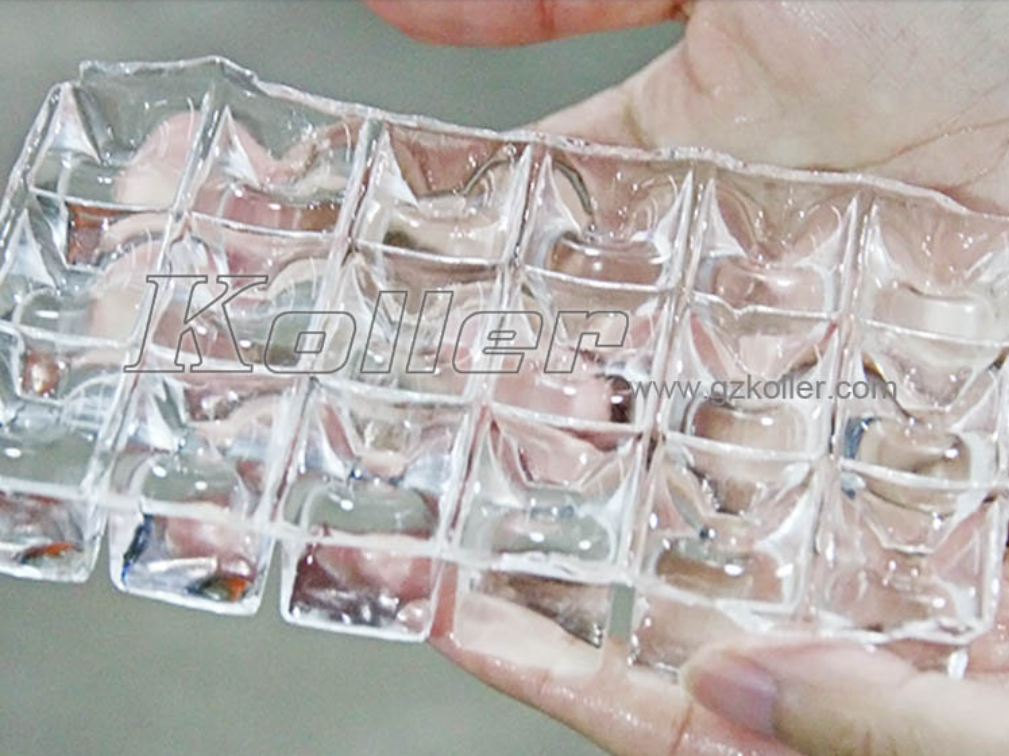
Cubos de gelo claros são altamente procurados por sua qualidade visualmente atraente. Ao contrário dos cubos de gelo nublados regulares, cubos de gelo transparentes têm uma aparência cristalina, aprimorando a apresentação geral de bebidas e coquetéis.
Guia passo a passo para fazer cubos de gelo claros
- Escolha o seu método preferido, Seja a técnica de água fervente, congelamento direcional, ou usando água destilada, e siga estas etapas gerais:
- Prepare a água fervendo, resfriamento, ou usando água destilada.
- Despeje a água preparada em bandejas de cubo de gelo, deixando um pequeno espaço no topo para expansão durante o congelamento.
- Coloque as bandejas no freezer e permita que eles congelem completamente.
- Remova os cubos de gelo das bandejas e guarde -os em um recipiente selado ou saco plástico no freezer até que seja necessário.
O que é um bloco de gelo?
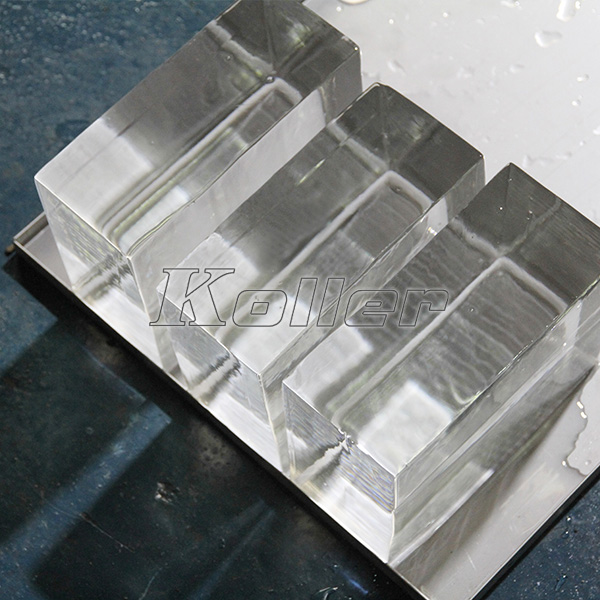
Um bloco de gelo é um grande pedaço de gelo sólido que é tipicamente em forma retangular ou cilíndrica. Ao contrário de cubos de gelo menores, Os blocos de gelo são comumente usados em ambientes comerciais e industriais devido ao seu tamanho e taxa de fusão mais lenta.
Aplicação de blocos de gelo

Blocos de gelo têm vários usos práticos, Incluindo:
- Preservação de alimentos: Eles são comumente usados na indústria de pesca e frutos do mar para manter itens perecíveis frios durante o transporte.
- Resfriamento de eventos: Os blocos de gelo são frequentemente usados para esfriar grandes quantidades de bebidas e alimentos em eventos como casamentos, festas ao ar livre, e festivais.
- Escultura de gelo: O tamanho e a estabilidade dos blocos de gelo os tornam ideais para escultura em gelo e escultura para fins artísticos e decorativos.
- Construção: Grande bloco de gelo é frequentemente usado para resfriamento do túnel, resfriamento de minas e resfriamento de concreto.
Prós e contras de blocos de gelo
- Longevidade e taxa de fusão mais lenta: Uma das vantagens dos blocos de gelo é sua natureza duradoura. Devido ao seu tamanho e massa maiores, Eles derreterem a um ritmo mais lento em comparação com os cubos de gelo.
- Adequado para eventos em larga escala e aplicações industriais: Os blocos de gelo são comumente usados em ambientes industriais, operações de catering, e grandes eventos em que é necessária uma quantidade significativa de resfriamento.
- Disponibilidade limitada e desvantagens de conveniência: Enquanto os blocos de gelo são ideais para cenários específicos, Eles podem não estar tão prontamente disponíveis ou convenientes para o uso diário em residências ou configurações de menor escala. Lidar e transportar grandes blocos de gelo também pode ser mais desafiador e exigir equipamentos especializados.
Como fazer grandes blocos de gelo?

Criar grandes blocos de gelo requer um processo e equipamento específicos para garantir sua formação e qualidade. Esta seção fornecerá uma visão geral das etapas envolvidas na fabricação de grandes blocos de gelo.
Equipamento e materiais necessários
Para fazer grandes blocos de gelo, Você precisará de um fabricante de blocos de gelo, que é uma máquina especializada projetada para congelar blocos de gelo. Adicionalmente, Você precisará de acesso a uma fonte de água confiável e recipientes ou moldes adequados para manter a água durante o congelamento.
Guia passo a passo para fazer blocos de gelo
Prepare o fabricante de blocos de gelo: Verifique se a máquina está limpa e em condição de trabalho adequada. Siga o fabricante de fabricantes de geloInstruções para configuração e operação.
- Encha o recipiente de água: Despeje limpo, água filtrada no recipiente ou molde designado. Evite usar água da torneira, que podem conter impurezas que afetam a clareza do bloco de gelo.
- Inicie o processo de congelamento: Coloque o recipiente de água preenchido no fabricante de blocos de gelo e ative a máquina de acordo com as instruções do fabricante. A máquina iniciará o processo de congelamento e regulará a temperatura para congelamento consistente.
- Monitore e ajuste o tempo de congelamento: Fique de olho no fabricante de blocos de gelo e monitore o progresso do processo de congelamento. O tempo de congelamento varia dependendo da máquina específica e do tamanho desejado do bloco de gelo. Siga as diretrizes do fabricante ou ajuste com base na experiência anterior.
- Remova o bloco de gelo congelado: Depois que o processo de congelamento estiver concluído, Remova cuidadosamente o bloco de gelo congelado da máquina. Tenha cuidado para evitar danos ou lesões durante o processo de extração.
- Armazene e manuseie o bloco de gelo: Transfira o bloco de gelo para um espaço de armazenamento ou recipiente adequado, garantindo que seja bem isolado manter seu estado congelado. Considere usar materiais isolantes adicionais, como toalhas ou cobertores, Para prolongar sua vida útil.
Dicas para alcançar blocos de gelo claros
Para aprimorar a clareza e apelo visual de seus blocos de gelo, Considere essas dicas:
- Use água filtrada ou destilada para minimizar as impurezas.
- Evite perturbar o processo de congelamento para minimizar as bolhas de ar presas.
- Experimente diferentes técnicas de congelamento, como congelamento direcional, para incentivar uma formação mais clara de gelo.
Perguntas frequentes: Quanto tempo dura um bloco de gelo?
A vida útil de um bloco de gelo pode variar dependendo de fatores como tamanho, temperatura circundante, isolamento, e circulação de ar. Em geral, Um bloco de gelo de tamanho padrão pode durar várias horas a alguns dias em condições normais. No entanto, Esta é apenas uma estimativa, e a duração real dependerá das circunstâncias e gerenciamento específicos do bloco de gelo.
Conclusão
Para concluir, Os cubos de gelo são um elemento de resfriamento conveniente e versátil usado em várias aplicações. Embora possam ter limitações em termos de capacidade de resfriamento e taxa de fusão, Eles são adequados para uso individual e fins domésticos. Adicionalmente, Para aqueles que buscam uma opção visualmente atraente, cubos de gelo claros podem ser alcançados através de vários métodos, melhorando a estética geral das bebidas e adicionando um toque de elegância a qualquer ocasião. Considere as necessidades específicas e o impacto visual desejado ao escolher entre cubos de gelo regulares e cubos de gelo claros para elevar sua experiência de refrigeração.


